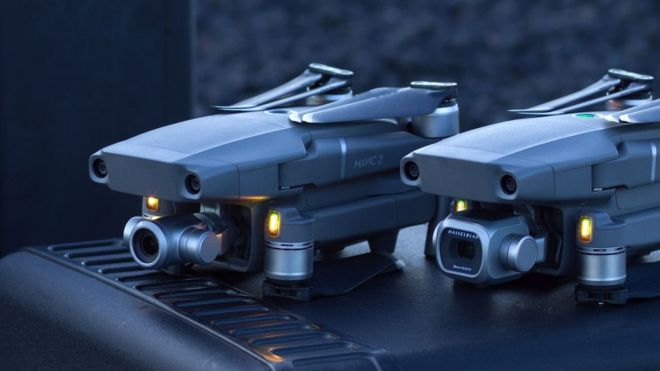Yesterday saw the launch of a new flagship product from DJI. This is an important event for anyone interested in drones, because sharing the opinions of many users, there is no better commercial drone manufacturer than DJI. After a long wait, new drones have officially debuted DJI Mavic 2 Pro and DJI Mavic 2 Zoom.
So far, there has been a lot of speculation about the differences from its predecessors Mavica Pro and Mavica Platinum (a quieter, improved model of the Mavica Pro), which set trends for the drone market. Today we already know that there are many differences separating these drones.
First, the main difference is the camera sensor. The predecessor boasted a 1/2.3' sensor size, the latest PRO model has a 1' (20 MP) sensor. The camera was developed with the assistance of Hasselblad. The Phantom- 4 Advanced and Phantom 4 PRO models, which are much larger models, were famous for having a matrix of 1. It's hard to believe, but DJI in cooperation with Hasselblad managed to create a camera, with such a sensor in a drone, with such small dimensions. Many drone pilots and users, were just hoping that DJI would go in this direction.
The ZOOM version of the camera has a 1/2.3' (12 MP) sensor. This is a version for less demanding users who do not process or edit their video footage to zoom in on an object. The ZOOM version can also work well for all kinds of inspections where the drone can't fly too close, such as cellular antennas.
Looking for other differences between the new Mavic 2 and its predecessor, we can point to the maximum speed of the drone. The drones unveiled yesterday reach dizzying speeds of around 72km/h, which any lover of filming "fast action" might like, especially considering that the drone itself makes sure that the action is always centered on camera. The Mavic Pro and Mavic Platinum reached speeds of 65 km/h, so they are not that far from their younger successors. There is also a difference in flight time. The new Mavicas achieve a maximum flight time of 31 minutes, so so realistically looking at normal conditions it will be 29 minutes of flight (time from takeoff to landing).
Another difference is sensors that detect obstacles. Mavic Pro and Platinum had only VPS bottom sensors and front sensors. The Mavic 2 has a sensor on all sides (front, rear, left, right), and the lower VPS sensor is additionally illuminated so that landing in the evening or at night is safer and more comfortable for the pilot. So, the body of the Mavic 2 is saturated with technology such as cameras and sensors.
As for obstacle detection sensors, as we know, they are designed not only to protect us from unexpected obstacles, but also to track objects. DJI has also improved this feature. It now bears the new name ActiveTrack 2.0.
Like the Mavic Air, the Mavic 2 can avoid obstacles by tracking an object if we disappear behind a tree branch, for example, so it won't lose sight of tracking us.
The price of the Mavica 2 Pro is £6,239, while the ZOOM version costs £5,379. Currently, the older models (Mavic Pro and Platinium) have come down heavily, and their price may yet come down, which is good news for consumers and drone users.
To sum up Mavici 2
New models are faster, more accurate and have a longer range. All of this improves the quality of work in the air. We should also mention improved features such as faster autofocus, better photos thanks to HDR technology we know from smartphones, and better H codecs.265.
There are more differences, such as the unscrewable control rods in the apparatus. Of course, a Comb package will be available for the Mavic 2. So that accessories will certainly not be lacking. Renowned brand PGY, known for its good quality accessories for specific models, has already announced the production of parts for the new Mavici 2. We hope they will be available as soon as possible so that customers can take full advantage of the drone from the start.
Considering the differences between the new models and its predecessor, although not all of them are mentioned in the article, DJI once again proves that it is a leader in the drone market and shows how it is ahead of the competition. Now we are left to await delivery to the Polish market to be able to test in practice the novelties that DJI has served us.
Then it remains to await the next launch. It is very possible that the new Mavic 2 will be followed by its big brother - Phantom 5 ;)

